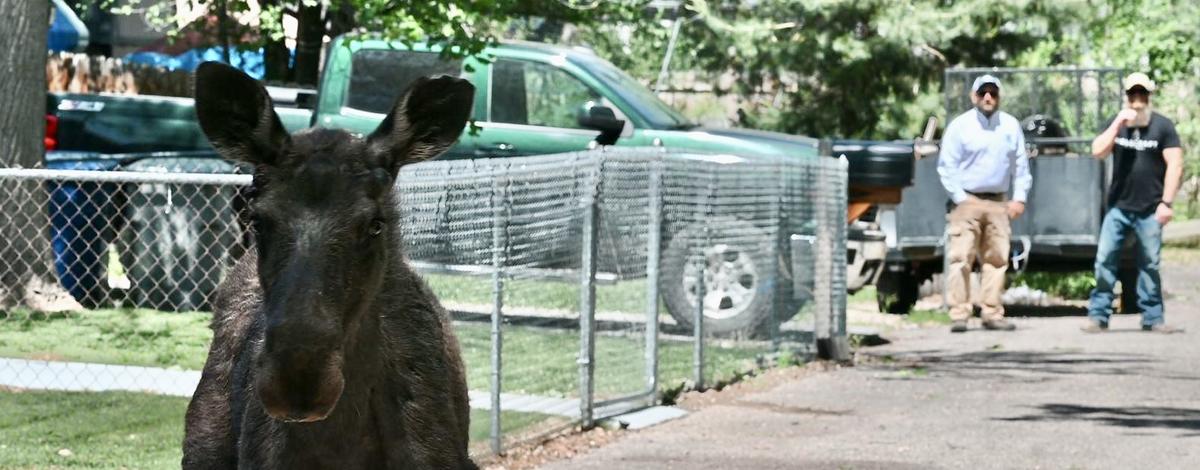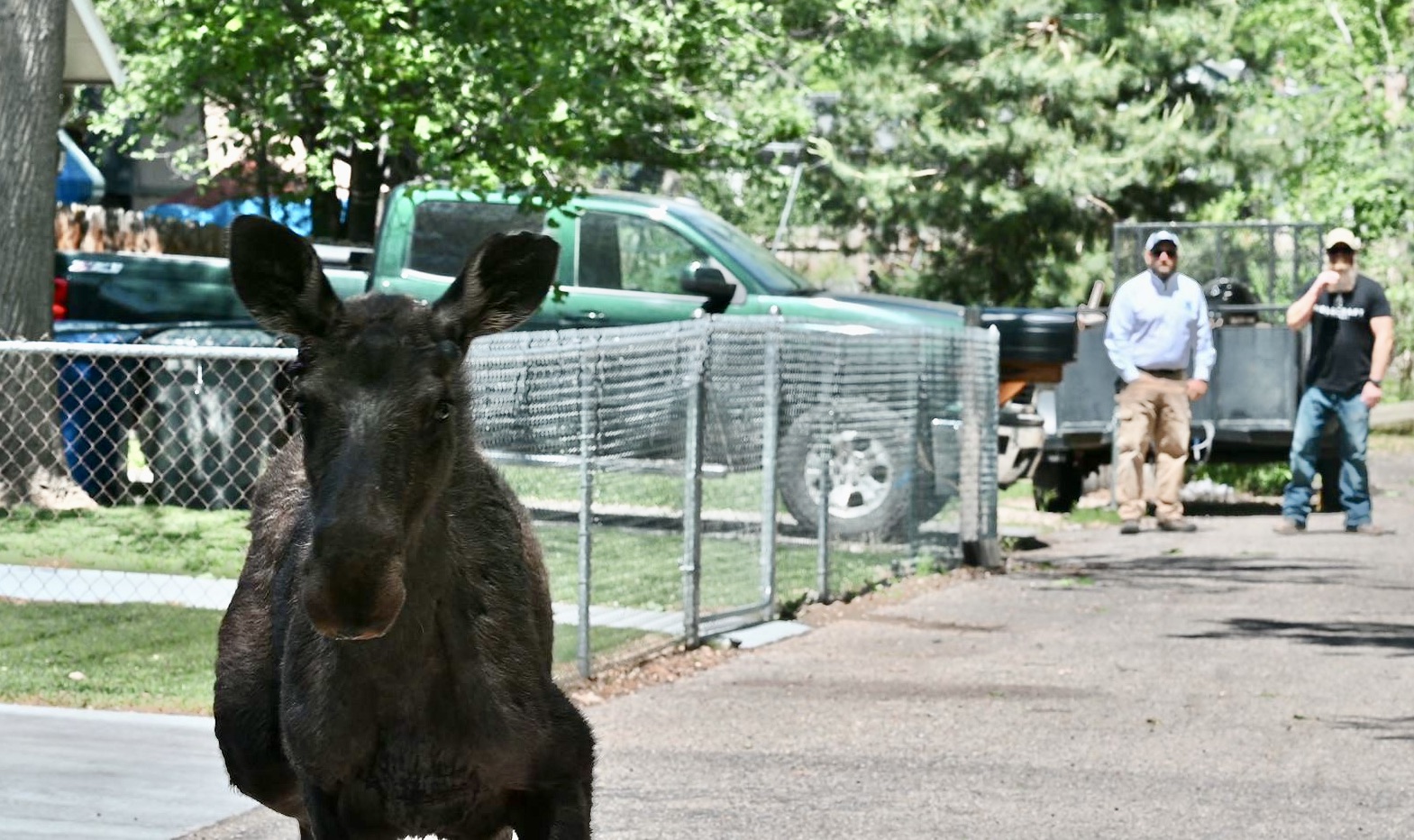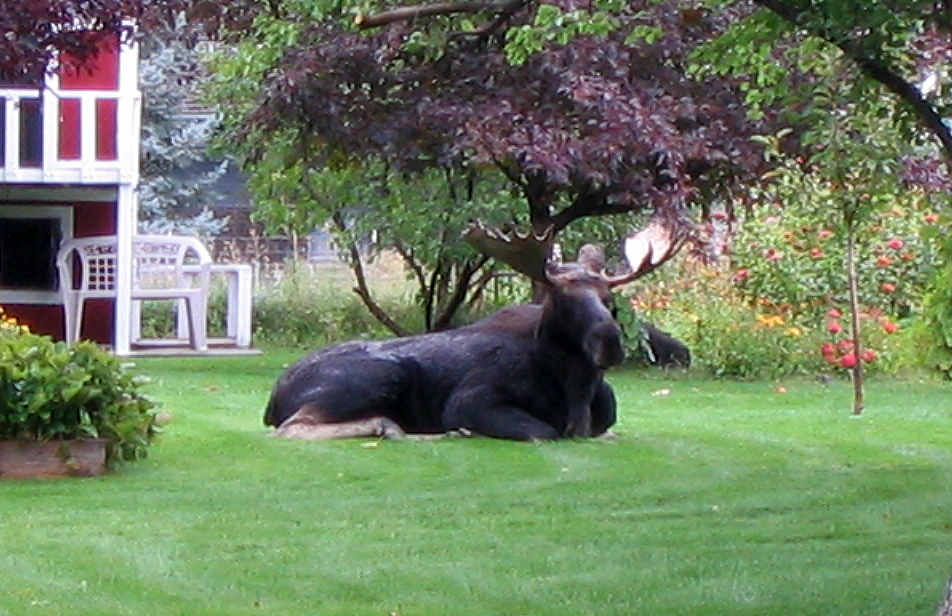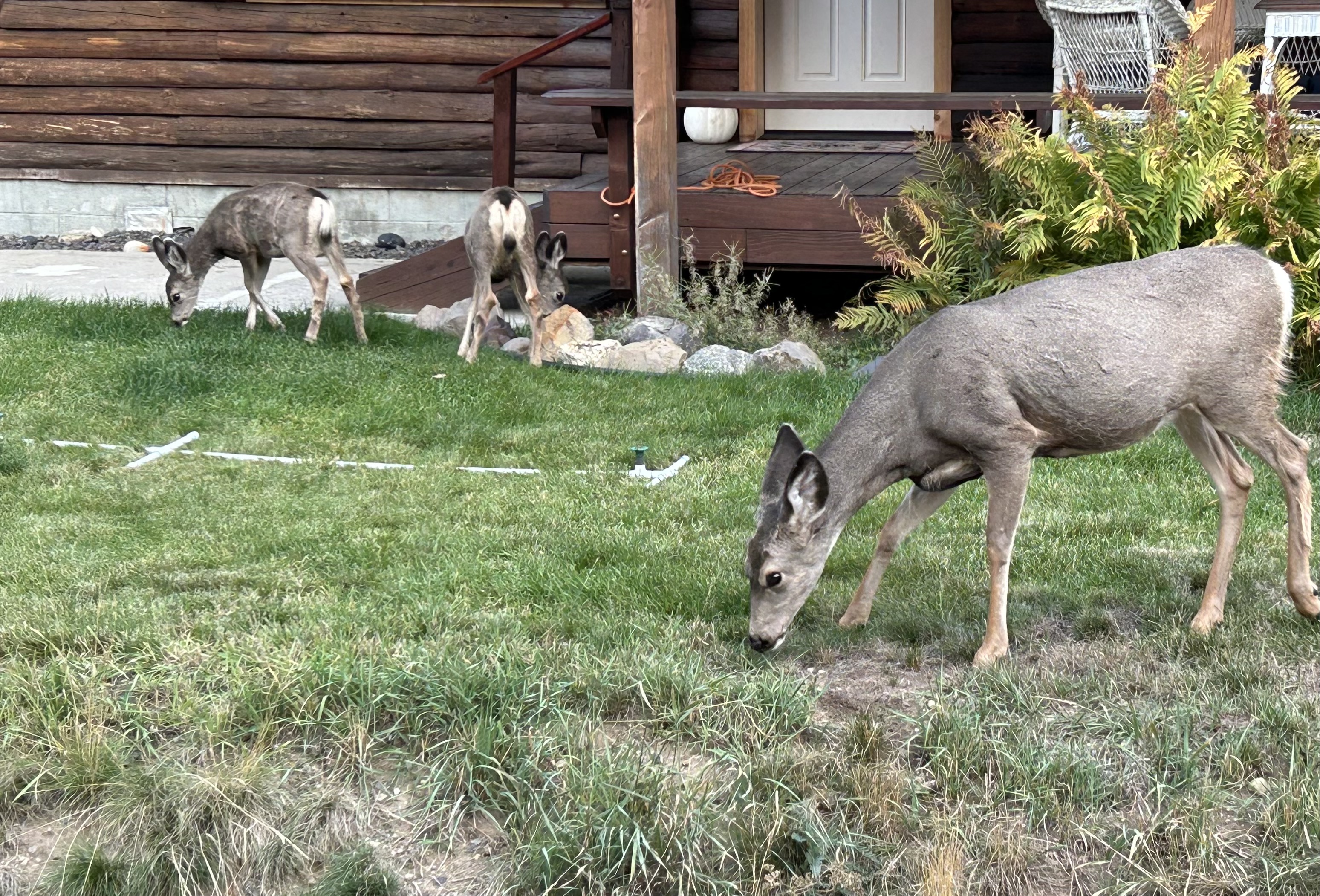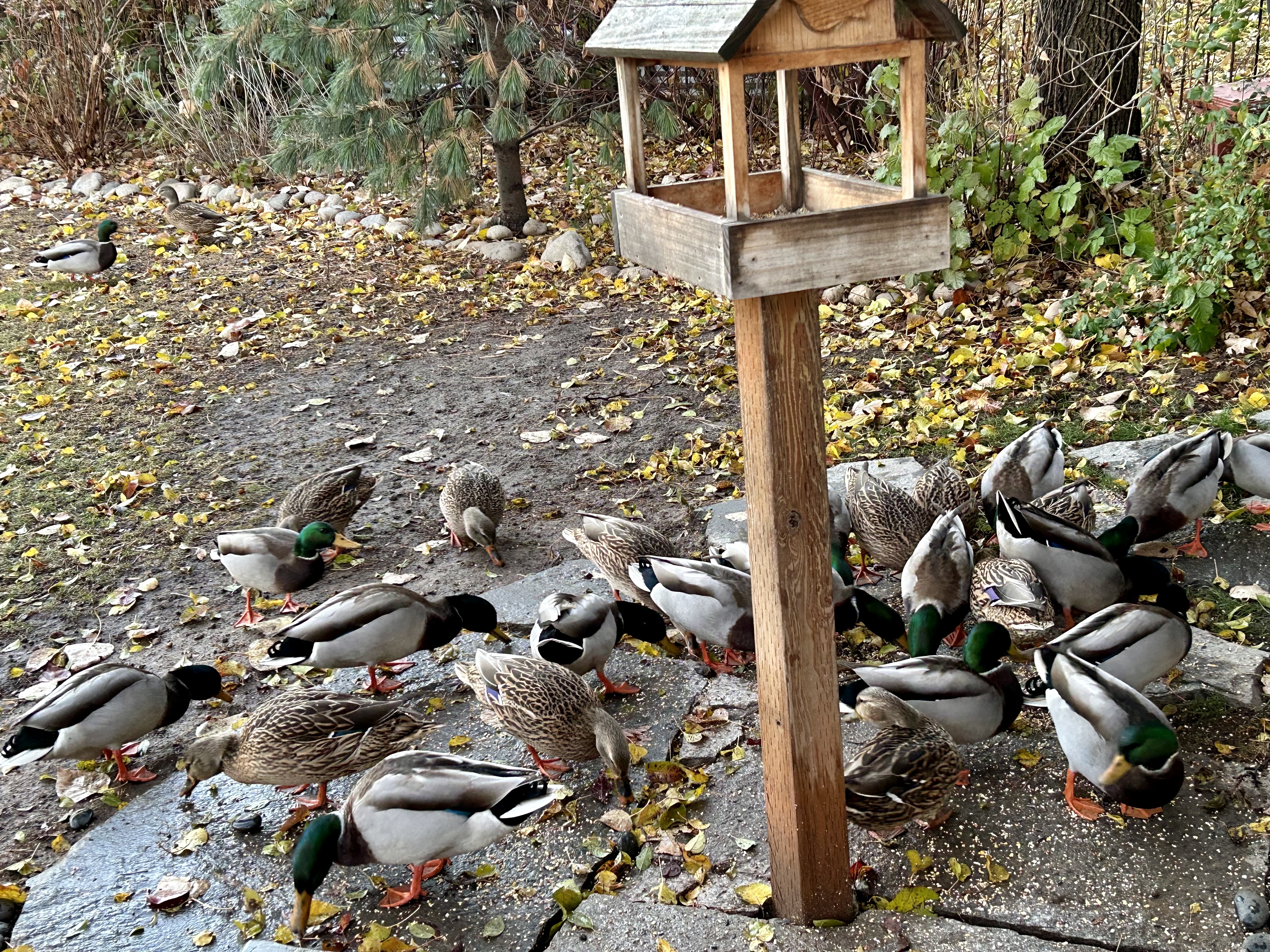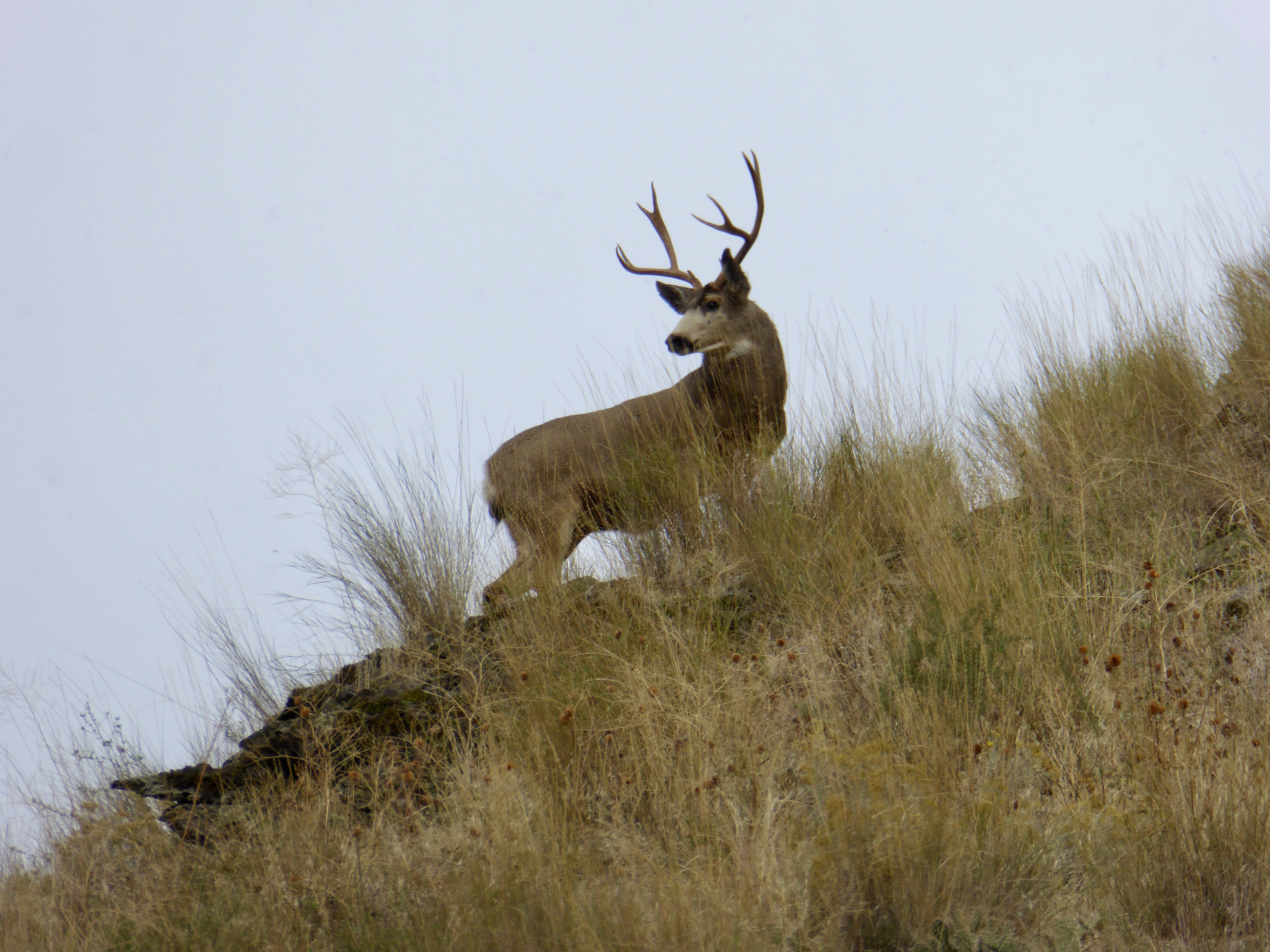A bull moose takes up residence in an upscale, suburban neighborhood, and Idaho Fish and Game staff gets multiple reports from homeowners.
What should Fish and Game do?
A. Watch to see if the moose stays, how it reacts to residents, and vice versa?
B. Educate residents on why the moose is there, and what’s likely to happen next?
C. Immobilize the moose and move it back to the wild?
D. All the above?
None of the choices are wrong, and in the recent case of a bull moose that lived for months in a Boise suburb, the answer was D.

